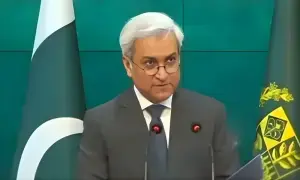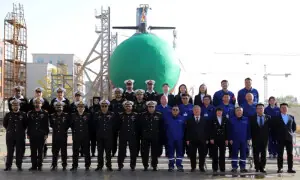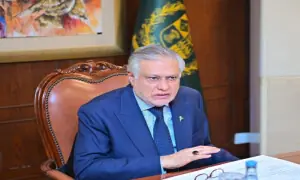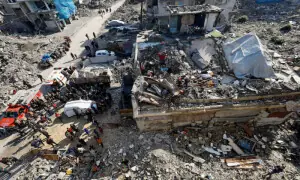Russia scraps robot Fedor after space odyssey

MOSCOW: It’s mission over for a robot called Fedor that Russia blasted to the International Space Station, the developers said Wednesday, admitting he could not replace astronauts on space walks.
“He won’t fly there any more. There’s nothing more for him to do there, he’s completed his mission,” Yevgeny Dudorov, executive director of robot developers Androidnaya Tekhnika, told RIA Novosti news agency.
The silvery anthropomorphic robot cannot fulfill its assigned task to replace human astronauts on long and risky space walks, Dudorov said.
Fedor, or Final Experimental Demonstration Object Research, was built to assist space station astronauts.
A storm of publicity surrounded Fedeor’s space odyssey and provided some light relief for Russia’s beleaguered space industry.
In the last year it has seen the unprecedented failure of a manned launch and continuing delays on construction of the Vostochny spacepad where President Vladimir Putin upbraided officials last week.
But Fedor turned out to have a design that does not work well in space — standing 180 centimetres (six feet) tall, its long legs were not needed on space walks, Dudorov said.
The Russian space agency said the legs were immobilised during the trip and Fedor was not programmed to grab space station hand rails to move about in microgravity.
Dudorov said developers were sketching out plans for a replacement “that must suit the demands of working on the outside of the ship”.
Fedor, officially Skybot F-850, rocketed to the ISS on August 22, entering the orbiting laboratory five days later.
On the station, the robot posed holding a Russian flag and for hugs with cosmonauts who were assigned to train it before touching down back on Earth on Monday.
A final tweet posted in an account in the robot’s name said: “Now I’m in my case. I await directions for further tests after the flight.”
Fedor was not the first robot to go into space. In 2011, NASA sent up Robonaut 2, a humanoid developed with General Motors that had a similar aim of working in high-risk environments.
It was returned to Earth in 2018 after experiencing technical problems.
In 2013, Japan sent up a small robot called Kirobo along with the ISS’s first Japanese space commander. Developed with Toyota, it was able to hold conversations — albeit only in Japanese. —AFP














Comments are closed on this story.